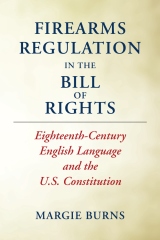The next 2017 special election is taking place–as I write this–in Kansas.* Democratic candidate and Army vet James Thompson and Republican Ron Estes are running for the seat vacated when Rep. Mike Pompeo left to become CIA director.

James Thompson, Ron Estes
Kansas House District 4 is traditionally Republican–like most of Kansas, dating from back when the state refused to enter the Union as a hotbed of proponents for enslaving fellow human beings. (See the repudiated ‘Lecompton Constitution’ for the history. It plays one part in Chapter 6 of my book, Firearms Regulation in the Bill of Rights, the chapter on the nineteenth century.) The GOP began as an anti-slavery movement.
The most recent history in Kansas’ 4th mainly displays the differences between how the Democratic Party and the GOP support their candidates–or don’t. Not to the advantage of the former. Thompson, a civil rights attorney who has experienced something like poverty, has not been supported by the state Democratic Party.
Nor has he been supported by the national party.
Meanwhile, the Repubs aren’t making the same mistake. Politico reported last week that “The NRCC spent $25,000 on digital advertising in the upcoming KS-04 special election – a dark-red district left open by CIA Director Mike Pompeo and not expected to be competitive.” At this point several news outlets are reporting efforts on behalf of Estes by the national GOP, as for example here and below.
http://salinapost.com/2017/04/10/texas-sen-cruz-to-have-rally-for-gop-hopeful-in-kansas-race/
Meanwhile again, all hands are on deck–as I wrote last week–to help out candidate Jon Ossoff in Georgia’s 6th, running against a field that includes four other Democrats. Guess you have to be running against other Democrats to draw the needed attention. And draw it he did; boosted by Daily Kos and ActBlue along with other organizations, Ossoff pulled in a breathtaking $8.3 million in contributions, a record. (Kos has belatedly weighed in on behalf of Thompson in Kansas–very belatedly. Since my last post, in fact. Within the past week.)
If the Dems wanted to help a House candidate, why didn’t they help this guy? –His intra-party opponents were already eliminated. He had been nominated in a democratic in-state process. No getting hands dirty. No hurting anyone’s feelings. Fewer suggestions of favoritism, arbitrariness, back-room deals or artificial pre-selection.
What is some Democrats’ problem with looking democratic?
Trick question.
Here is my hypothesis, and I have no problem with corrections, emendations or refutation. Feel free to refine, by all means. But here it is: in my view it is a problem when national and state Democrats neglect their own good candidates running against Republicans and instead pour resources into trying to pick a nominee against other Dems. It looks undemocratic, for one thing. For another, in Georgia 6th (picking a random example here), with four other Democratic candidates, outside support for Ossoff runs a substantial risk of alienating supporters of the other four. Also, that kind of big money pouring in–overwhelmingly from outside the state and largely because of large entities like MoveOn and Kos–can turn off voters. Voters cease to think their vote will make a difference. (This was one of the key factors behind non-voting in 2016, according to a Pew research survey).
As the Atlanta Journal-Constitution notes, an influx of massive outside money can contribute to negative perceptions of the candidate. Not that any candidate wouldn’t be happy to get millions of dollars in contributions, from virtually anywhere. But the national party’s focus on one candidate running against fellow Democrats does not redeem its neglect of strong candidates facing opponents across party lines. This is the way to rebuild the Democratic brand after Clinton?
Predictions are vain. Thompson may win Kansas’ 4th despite the lack of intelligent, principled support from the state and national party. Ossoff may win more than 50 percent in Georgia’s 6th despite the massive unintelligent, unprincipled support from same–and from Daily Kos, which pre-selected him way ahead of time, and from MoveOn and the other out-of-state groups.
Right now, however, the available forecasting and results raise questions. They do not provide answers, as anyone who remembers 2016 would do well to remember. The money gap in Georgia cannot be disputed. The leading Democratic candidate, Ossoff, has received a nonpareil amount of money in one quarter for a House race–and more than all the Republican candidates combined. I am not denying the deep feeling of out-of-state ActBlue donors. But isn’t there a possibility that some potential GOP donors are waiting until after the primary to donate?
The early voting results also cannot be disputed. There is an extra-large turnout by Democrats in early voting. As the New York Times’ Nate Cohn tweeted a few days ago, early voting as of Saturday was 49 percent Democratic, 29 percent Republican. So does that mean the percentages will be the same on April 18?
More to the point, is all that Democratic turnout really going to one candidate?
That’s the line taken by the careerist-type Dems in the big media outlets. HuffPost headline: “Democrats Continue to Turn Out in Second Week of Voting for Jon Ossoff”. Brought to you by Andrea Mitchell at MSNBC, via HuffPost (and probably by others at MSNBC).
Okay, I’ll bite. How do they know the Dem turnout is for Ossoff? Is anyone doing exit polling? Are any exit polls available? Are any other Democrats receiving votes?
*This post was initially planned to go up on April 11.


